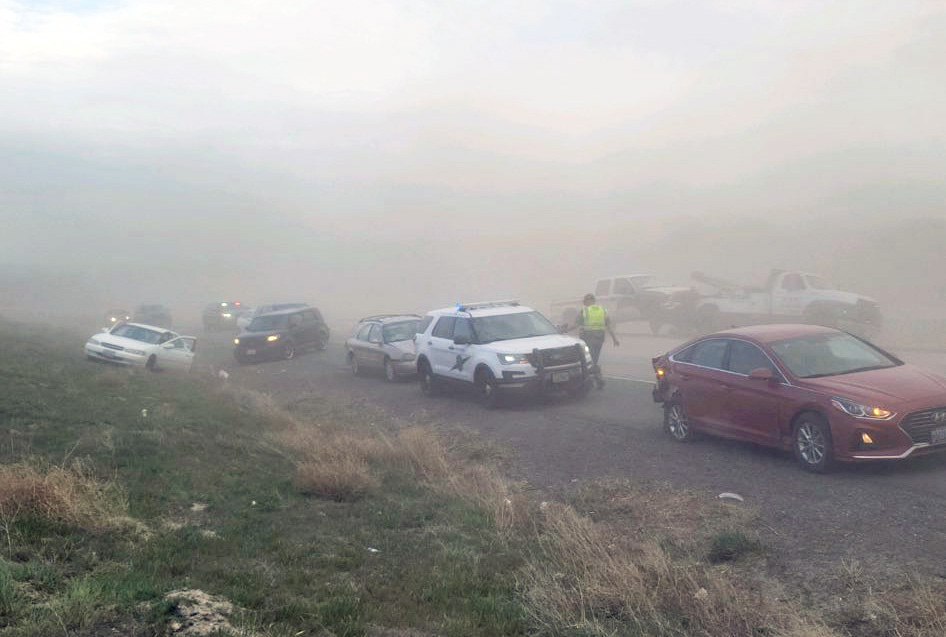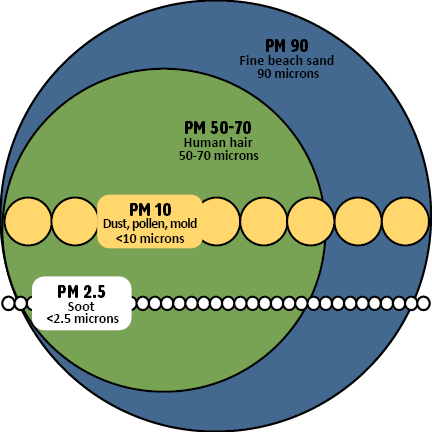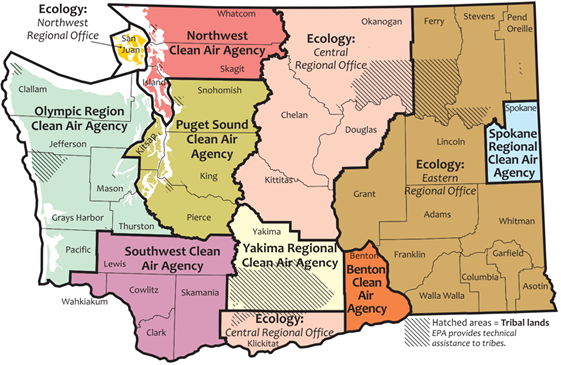
On March 28, 2021, a dust storm resulted in a seven car pile-up near Richland, WA.
Photo - Washington State Patrol Trooper C. Thorson
What causes dust storms?
Dust storms, also called haboobs, happen when strong winds pick up dry soil and blow it around in big clouds that can threaten your health and safety, especially while driving. They can occur in Central and Eastern Washington every spring through fall. The past two years the first storms happened at the end of March/mid-April.
What you can do
You can help minimize dust storms by:
- Driving slower on unpaved roads.
- Postponing projects at home that stir up dust.
If you are caught in a dust storm, protect yourself by:
- Staying indoors as much as possible.
- Closing the windows, doors, and vents at home and in your vehicle.
- Covering your nose and mouth.
- Wearing an N95 mask designed to block dust particles.
- Watching for sudden changes in visibility while driving.
- Avoiding driving during windy conditions when windblown dust is likely.
- Pulling over and turning off your headlights and hazard lights as a safety precaution.
How dust storms affect your health
Dust storms pick up fine particles, called particulate matter — or PM10 — that are smaller than a human hair or grain of sand. These particles are harmful to your health when inhaled. The particles can settle deep into your lungs, irritating or damaging sensitive tissues in your respiratory system.
Those at high risk are infants, small children, people with asthma or respiratory issues, the elderly, and those who engage in strenuous outdoor activities.
Get alerts and check air quality
Ecology and local clean air agencies monitor the air for dust and other types of air pollution. You can track air quality in your area on Ecology’s Air Quality Monitoring website. Sign up for National Weather Service Wireless Emergency Alerts to receive high wind warnings. Weather.gov has links to a number of alert services.
Agricultural & construction practices make a difference
Agricultural and construction projects, along with drought that leave the ground bare can stir up dust, contribute to the formation of dust storms, and pollute groundwater. "No-till" agricultural practices helps keep soil on the ground and out of the air and water.Photo - USDA
The good news is that modern soil conservation efforts are starting to pay off. Dust storms are occurring less frequently in Washington since the mid-1990s, partly because the agriculture industry is implementing better management practices to prevent soil erosion, such as:
- No-till farming
- Direct seeding
- Planting cover crops
- Establishing windbreaks
- Using dust suppressants, like water or gravel
In April 2019, we developed a High Wind Fugitive Dust Mitigation Plan that focuses on agricultural dust sources in the Tri-Cities area. We meet regularly with a workgroup made up of conservation districts and the Benton Clean Air Agency to promote practices that help prevent soil erosion.
For more information contact the clean air agency for your area:
- Benton Clean Air Agency: 509-783-1304
- Ecology Central Regional Office: 509-575-2490
- Ecology Eastern Regional Office: 509-329-3400
- EPA Region 10 - Tribal lands: 1-877-424-4372
- Spokane Regional Clean Air Agency: 509-477-4727
- Yakima Regional Clean Air Agency: 509-834-2050





